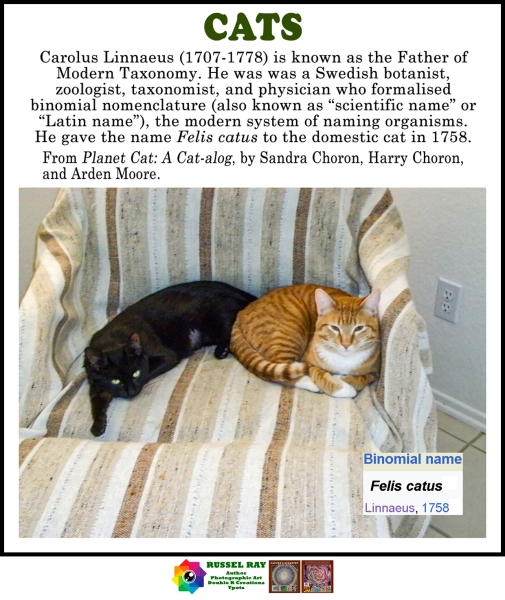




One of my roommates in 1974 at Texas A&M University was from Waller, Texas, which is about half way between Houston and College Station.
I lost track of him when I moved to San Diego in April 1993. I moved with the intent of distancing myself from old family and friends. No more need to keep up with the Joneses.
In 2011, I was exploring the border area in South San Diego when I came upon San Diego Beach Rides. I rented a horse ride for the beach. Pretty cool.
When I got back, I told the owner that he looked like my college roommate from 1974. He said, “Oh, I’m from Texas.” That, of course, started a conversation. Turns out that he wasn’t my roommate, but he was my roommate’s younger brother.
I was able to get connected again to my old roommate who was living in Littleton CO. Small world. Unfortunately, as with all but two of my old friends and family in Texas, our politics didn’t mesh, so I disconnected again.
This horse picture is from October 4, 2011, at San Diego Beach Rides. It’s the horse that I rode. I guess it wanted to get those Russel cooties off. After I pet Little Queen Olivia, she proceeds to do the same thing.



For the past 17 days, every morning when I get up I check on my mommy mourning dove on her nest. Sadly, yesterday morning this is what I saw:

I have been a birder for 60 years, so I know that there is a Great Horned Owl out here in the East San Diego County boondocks. It lives in the bushes and trees about a 100 yards north of me. Been there for 2 years and 10 months.
When I was outside to pull weeds yesterday morning, I heard Mr. G. H. Owl calling to me from about 50 yards to the south. Who? Who? Who? I think I know WHO got my mourning dove babies.
I am completely powerless against police brutality, racism, the Twitler Crime Family, et al., but I really thought I could help mommy mourning dove safely raise her young.
Still sad.


Sixteen days ago, I got up with the sun (5:30 a.m.) and pulled a ton of weeds along the fence between my property and the open space preserve. I left a huge pile of weeds, figuring I would haul them to the trash later. I took a shower and a nap.
When I went out to the gardens to get my daily snapshots of flowers, I leaned in close near a hanging basket and something hit me in the head and flew away. I didn’t see what it was, but I did see this in the hanging basket:

That was not there six hours earlier. Mommy, presumably with help from daddy, found my pile of weeds, built a nest a few feet away, and deposited two eggs in only four or five hours. Fortunately, after me disturbing mommy (presumably), she came back to take care of those eggs:

Research indicates that it takes about 14 days for mourning dove eggs to hatch and another 15 days for the little ones to leave the nest and go exploring the world.
I got a picture of a little bird on Day 13.

And on Day 14, today!, I got a picture of two little birds!

And then there were three. I’m so happy! Now our goal is to help mommy protect these two little ones for the next couple of weeks so they can fly away, fly away.

I got up at 5:30 this morning to go pull weeds and clear dead brush along the fence. Nothing unusual about that.
I just went out to take pictures of the cactus flowers that are blooming. I leaned in close with my 90mm macro lens and suddenly something hit me in the head and went flying away.
The last time I was hit in the head by something flying was 1968 under the Congress Avenue bridge in Austin. That time was a flying bat (if you’ve never seen the bats take to the skies at dusk at the Congress Avenue bridge, go!).
This time, it was a momma mourning dove. Interestingly, she and her nest were not there at 6:00 this morning. In a mere six hours she (and daddy?) built a nest out of brush laying in a pile nearby, and she laid two eggs in it.

I’m so happy because the last time I had baby birds was annually from 1968-1973 in my wise old grandmother’s yard. I had built a bird house using a Boy Scout handbook and attached it high in our ash tree. A family of screech owls moved in. They are known to use the same nesting site annually, and they did.
Research indicates that it takes 14 days for mourning dove eggs to hatch and another 15 days for the little ones to take off on their own.
Fortunately, I have most of the weeds pulled in this area, and the rest can wait for a month. The presence of momma and, hopefully, two little ones means that any future pictures from my retaining wall gardens will have to be taken through the window in my home office using my 600mm lens. Can’t wait to see how those turn out.
It takes me 4 minutes to walk from the sunny retaining wall gardens back to the home office. By the time I got back inside and looked out the window, momma bird was back on the nest.


On Saturday, March 14, I drove to Visalia, California, a distance of 327 miles. It was a 10-hour round-trip. My purpose was to speak to the Visalia Succulent Club on Nature’s Geometry in Succulents.

I got to go over The Grapevine, a 40-mile stretch of Interstate 5 over the Tehachapi Mountains from California’s San Joaquin Valley to Grapevine.

It’s a monster of a road because there’s a lot of semi traffic doing 5-10 mph in the slow lane, and semi traffic doing 10-30 mph in the second lane. Traffic in the other lanes is cruising by at 55-65 mph, with some doing up to 90 mph in the fast lane. The weather can be atrocious because of the height of the mountains, raining at the top (4,000 feet) but clear on both sides, and even snow at some times of the year. Couple the weather with the wide range of speeds, and there always are various accidents.
The meeting was at 6:00 p.m., and since I got there at 10:15 a.m., I had a lot of time to explore. Visalia and its sister city of Exeter were quite beautiful with all the trees that were blooming.




Exeter, with a population of 10,000, had a very cool little downtown area. There were murals on the exterior of 32 buildings. I didn’t find them all, but the following one, #15 and titled “Tracks of Time,” was my favorite.

In Exeter, I found a bookstore with lots of local history books, so I bought one, a hard-cover edition of a book that itself is difficult to find.

The bookstore also had a cat. I’m one of those who have to take time out of my busy schedule to pet a cat, so this little one got 15 minutes of love and attention from me. Look at the expression on his face as I told him that I had to go but would make him a Facebook star.

With the COVID-19 pandemic in full swing, when I got home at 4:00 Sunday morning, I decided to self-isolate, not because I think I might have caught something in the Central California Valley but rather because at my age (65 years and 8 days) and with my high blood pressure; skin cancer and seborrheic keratoses; BPH; and constant coughing, sneezing, and trouble breathing due to a deviated septum from a broken nose sometime in my early childhood (according to the otolaryngologist), I’m in the high-risk category. My constant coughing and sneezing also might cause concern to anyone within hearing distance. I have pills to help control the coughing and sneezing, but I never know how long before they take effect and when they might expire.
I’m keeping a journal of my days at home in self-isolation., trying to keep things in perspective.
Day 1—I have decided to self-isolate. Since I am retired, between watching television (although no sports), gardening (lots of weeds to pull and flora to plant), and taking care of Little Queen Olivia (who doesn’t seem to be real excited about me being home all day), self-isolation shouldn’t be too hard.
Day 2—After a day of drinking margaritas and watching the Hannibal series on Prime TV, I can definitely state that drinking margaritas all day does not make you poop. Thusly, I am out of margaritas, but I have 1,618 rolls of toilet paper.
Day 3—Little Queen Olivia is completely oblivious to the fact that I am home and willing to give belly rubs.

Day 4—Self-isolation isn’t so bad, but I do find it interesting that there are 8,471 grains of rice in one box and 8,552 grains in the other box.
Day 5—It’s been raining all this week, with 3½ inches these past two days, and it’s raining hard right now. Pulling weeds and planting flora is going very slowly. Ah well, that means I definitely still have things to do during the next nine days of my self isolation.
My self-isolation will end on March 28, and three days later my 90-day free trial of the year 2020 ends. Where do I cancel?
Hope everyone is doing well in these weird times we’re living in.

I went camping for three days last weekend in Anza-Borrego Desert in Southern California, perhaps the best ever camping trip I have been on.
Out of several hundred Ferocactus cylindraceus plants I saw in the desert, I found these two that clearly show spiraling flowers, rather unusual in cacti.


Go, Fibonacci, go!
When I moved out here in the East San Diego County boondocks at 682′ elevation in July 2017, I started landscaping with my favorite plants. Keep in mind that, at that time, I had 62 years of experience growing my favorite plants.
Well, two of my favorite plants, Agave attenuata and aeoniums, don’t like it out here. Agave attenuata simply doesn’t like it when it gets below 40°F, of which we have had several weeks, and aeoniums don’t like it when it gets too hot, of which we have had several weeks of 100°F+.
After trying to will them to live and look nice, I gave up in October 2019, and I’ve been replacing all of them with cacti, mostly Ferocactus.
One of my purposes in going desert camping was to get a good look at Ferocactus cylindraceus since it’s native to Southern California just 80 miles from me. I am officially in love (but don’t tell my husband).






I found the tallest ferocactus I had ever seen, standing six feet and six inches tall, four inches taller than me.

I’m the one in red.

Additionally, I found the clumpiest clump (with seven heads!) and the tallest clump.


And, to top things off, I found the desert rains and a desert rainbow!


When I was in Bakersfield, California, on February 11-12, 2020, high on my list of places to visit was the California Living Museum, or CALM for short. It specializes in California native fauna and flora.


Although the California Living Museum is only 14 acres with 250 animals representing 80 species, I can highly recommend it.
Keep in mind that I have been a member of zoos, arboretums, aquariums, and animal sanctuaries since I was 13 when my wise old grandmother got me a membership to the Gladys Porter Zoo in Brownsville, Texas. After that it was the San Antonio Zoo and the Houston Zoo. Also keep in mind that I have been a member of the San Diego Zoo since May 1993.
When I was searching for things to do in Bakersfield and found the California Living Museum, I immediately compared it to the San Diego Zoo at 99 acres, 3,700 animals, and 650 species, and the San Diego Zoo Safari Park at 1,800 acres, 3,500+ animals, and 400+ species.
I had convinced myself that I would be disappointed, but I just cannot bear to miss a zoo, arboretum, or sanctuary, so off I went, thinking that since it specialized in California native flora and fauna, maybe I would see something that I had never seen before. At $10, the price was right, too!
I spent four hours at CALM, which breaks down to $2.50 per hour. That’s entertainment that doesn’t break the bank!
Following are some of my best pictures of CALM.
Seeing a saguaro (Carnegia gigantea) in the parking lot gave me great hope
and it only got better.


Barrel cactus

Northern Mojave Rattlesnake

Northern Pacific Rattlesnake

Southwestern Speckled Rattlesnake

Sidewinder

Sonoran Gopher Snake

Chuckwalla

Desert Iguana

Desert Tortoise

Desert Bighorn Sheep
Coyote
Mountain Lion


Nelson’s Antelope Squirrel

Roadrunner

Turkey

Western Scrub Jay

Barn Owl

Acorn Woodpecker

Bald Eagle


Did you notice that I got a picture of both a coyote and a roadrunner?


There is a feral colony of cats living in San Diego’s Balboa Park in one of the cactus gardens.
I call them the “Cactus Cats.”
Here are five of them keeping watch over the cactus:
